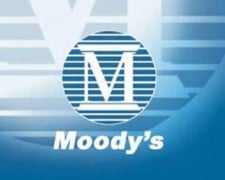 The entities behind television programmer and television station owner Ion Media have been given a basically good bill of health by Moody’s Investor Service, as it shifts away from reliance on infomercials in favor of syndicated fare and movies.
The entities behind television programmer and television station owner Ion Media have been given a basically good bill of health by Moody’s Investor Service, as it shifts away from reliance on infomercials in favor of syndicated fare and movies.
ION Holdco, primarily in the hands of Black Diamond Capital Management (to the tune of 87%) has been gives a B1 Corporate Family Rating; a B2 Probability of Default Rating; and its proposed $255M Term Loan B, which will come due 2018, also received a B2 rating. All of this added up to a stable rating.
Moody’s said the rating is a reclection of the company’s small size in relation to its competition, its good national distribution platform, its reliance on third parties for content, leverage in the moderate zone and lack of 100% control of ownership.
The shift in content strategy brings positives and negatives, noted Moody’s. Entertainment fare replacing infomercial content is a plus for ratings, but it also increases fixed program acquisition costs. It kicked off in the fall of 2008 and shifted into a higher gear upon ION’s emergence from bankruptcy in December 2009.
Moody’s stated, “ION Media has demonstrated a disciplined buying strategy that is in part based on the observable audience ratings for the programming during its first run cycle. But there are inherent risks in evaluating the costs relative to the potential audience and revenue generated from library content including dependence on continued cost-effective access to third party programming. This creates less ability to monetize content in emerging digital distribution outlets as a hedge against technology-driven shifts in consumer television viewing as well as exposure to third party content-owners’ right to distribute in emerging distribution channels.”
Negative include the elevated risk of audience loss and more exposure to volatile advertising market conditions.
Again, it’s a matter of balancing plusses and minuses. “Moody’s expects advertising revenue to trend higher as more hours are shifted to scripted programming and away from infomercials. However, fully monetizing the audience could be challenging due to the focus on non-exclusive library programming, and on an audience that is older with lower median household income than most of the channels with which it competes for viewers. Moody’s projects mid to low single digit revenue growth over the next few years assuming continued modest economic expansion, with downside risk should the impact of the fiscal cliff or other factors weaken the economy. Moody’s expects increased marketing investment in an effort to grow carriage fees (roughly 1% of 2012 revenue) as well as growing content investment to reduce EBITDA in 2013.”





